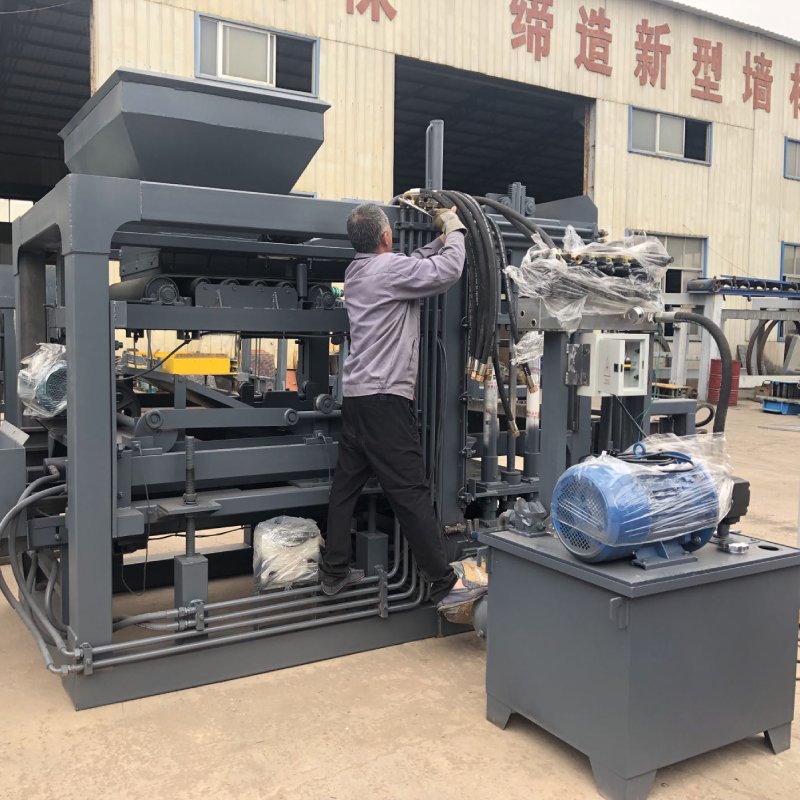
Image source Aiwei Block Machine
High-Speed Automated Block Forming Solution
Introduction
In the realm of modern construction, time is of the essence, and efficiency is paramount. The advent of high-speed automated block forming solutions has ushered in a new era of construction technology, transforming the way building blocks are produced. With a focus on speed, precision, and streamlined operations, these advanced systems are redefining construction practices, enabling faster project completion while maintaining the highest standards of quality. This article delves into the world of high-speed automated block forming solutions, exploring their features, benefits, and the profound impact they are making on the construction industry.
The Evolution of Automated Block Forming Solutions
Traditionally, block production was a labor-intensive process that involved manual labor, multiple steps, and a significant investment of time and resources. As construction demands escalated, the need for efficient and scalable solutions became apparent. The evolution from manual methods to mechanized processes was just the beginning. High-speed automated block forming solutions represent the culmination of years of innovation and engineering prowess, propelling construction into a new era of speed, accuracy, and sustainability.
Features and Components
High-speed automated block forming solutions incorporate a myriad of cutting-edge features and components designed to optimize the block production process:
- Robotic Precision: These systems deploy robotic arms or gantry systems programmed to execute precise movements, ensuring consistent block quality and geometry.
- High-Capacity Material Handling: Advanced conveyor systems and material feeders ensure a continuous supply of raw materials, minimizing downtime and maximizing production output.
- Real-Time Monitoring: Integrated sensors and monitoring systems provide real-time data on block formation, compaction, and quality, enabling immediate adjustments and minimizing defects.
- Quick Mold Changes: Interchangeable molds allow for rapid adjustments to block size, shape, and design, facilitating versatile production capabilities.
- Automated Curing and Stacking: Beyond forming, these systems often include automated curing and stacking processes, reducing manual labor and ensuring efficient handling of finished blocks.
Benefits of High-Speed Automated Block Forming Solutions
The adoption of high-speed automated block forming solutions brings forth a multitude of advantages that resonate throughout the construction ecosystem:
- Exponential Increase in Efficiency: The speed and automation of these systems drastically reduce production timelines, enabling construction projects to be completed in record time.
- Consistent Quality: Robotic precision and real-time monitoring guarantee uniform block quality, minimizing variations and defects in the finished product.
- Labor Savings: The reduction of manual labor required for block production translates into significant cost savings and a safer work environment.
- Resource Optimization: These solutions optimize the use of raw materials, reduce waste, and often incorporate sustainable practices, aligning with eco-friendly construction trends.
- Enhanced Project Management: Faster block production allows construction managers to better plan and execute projects, leading to improved project schedules and reduced costs.
Transforming Construction Practices
The impact of high-speed automated block forming solutions extends beyond individual construction sites, catalyzing transformative change:
- Large-Scale Projects: Mega-projects that once seemed insurmountable due to time constraints can now be tackled efficiently, meeting ambitious deadlines.
- Affordable Housing: These solutions have the potential to make quality construction more affordable, addressing the global need for accessible and sustainable housing solutions.
- Urbanization Challenges: As urban populations swell, efficient construction practices become imperative. High-speed automated solutions help address rapid urbanization demands.
- Innovation and Collaboration: The deployment of advanced technology fosters collaboration and innovation among construction industry stakeholders, spurring new solutions and practices.
Challenges and Future Prospects
Despite their remarkable benefits, high-speed automated block forming solutions are not without challenges. Initial investment costs, technological complexity, and the need for skilled personnel are factors that need to be carefully addressed. However, as technology continues to evolve and adoption becomes more widespread, these challenges are likely to diminish.
Conclusion
The rise of high-speed automated block forming solutions signifies a pivotal moment in the construction industry’s evolution. These systems epitomize the fusion of engineering prowess and technological innovation, redefining construction efficiency and quality. As their adoption becomes more prevalent, they have the potential to revolutionize how we build, enabling the realization of ambitious projects, promoting sustainable construction practices, and ultimately shaping the cities and structures of the future. High-speed automated block forming solutions are not just machines; they are the building blocks of a more efficient and dynamic construction landscape.
